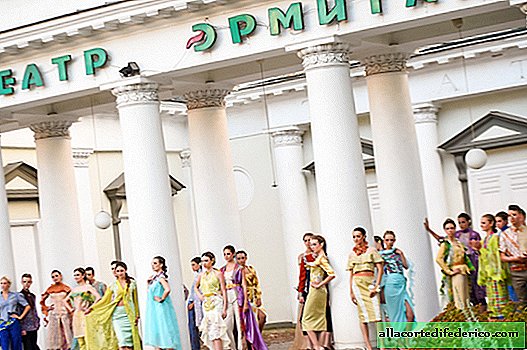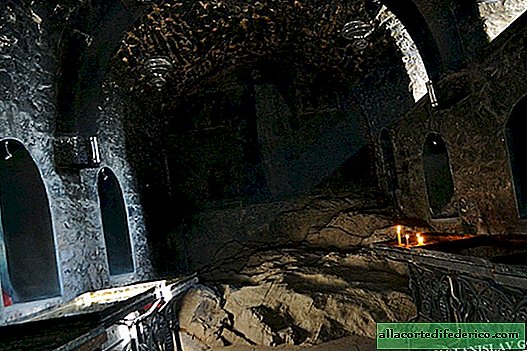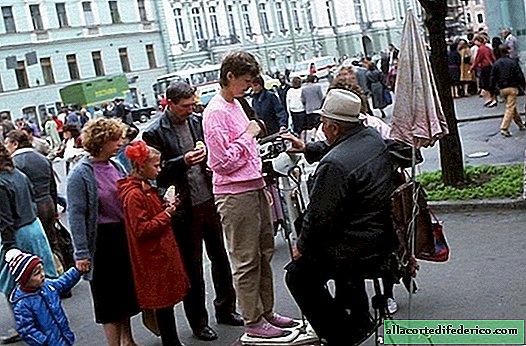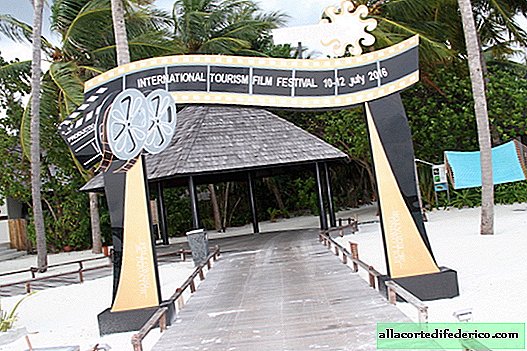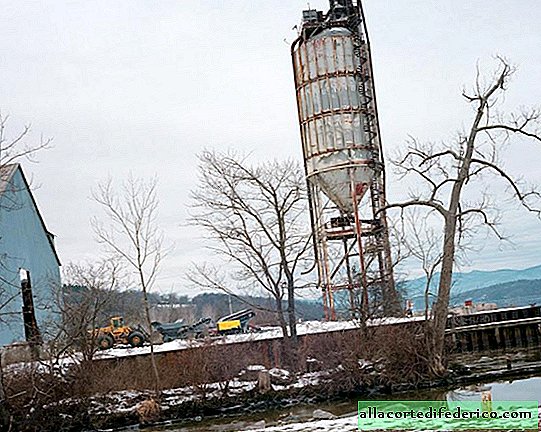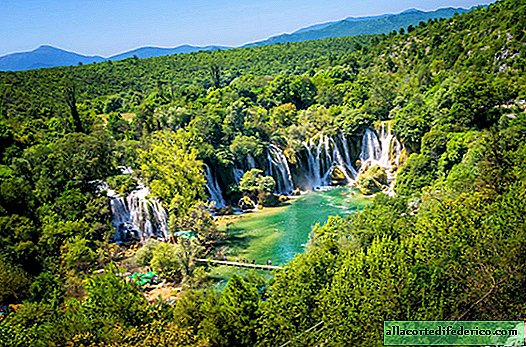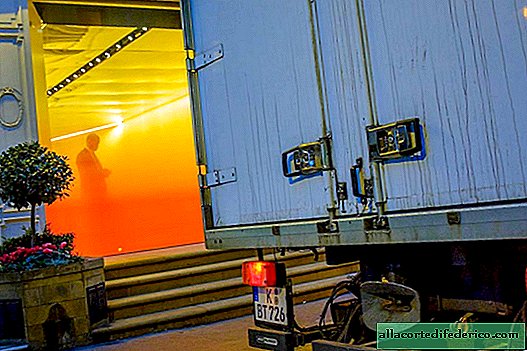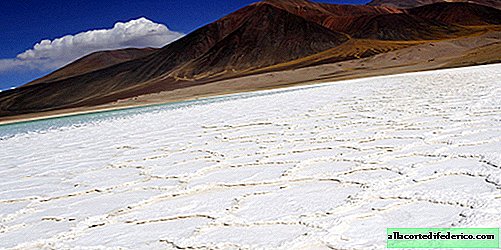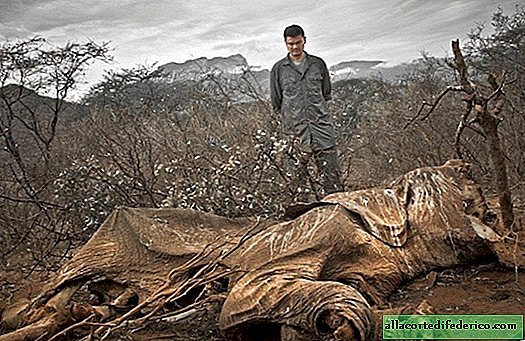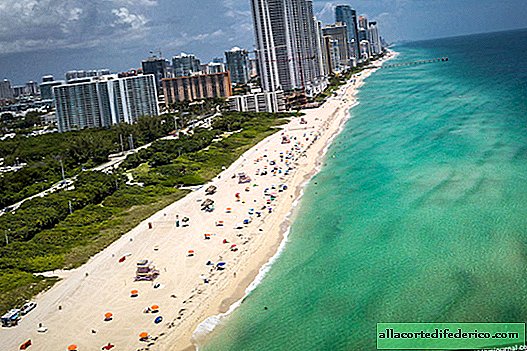Nickel Village: environmental disaster on Kola
The name of this urban-type village is Nickel. The one from the periodic table. Indispensable metal for the production of stainless steel and heat-resistant superalloys. Nickel is located 123 kilometers northwest of Murmansk.
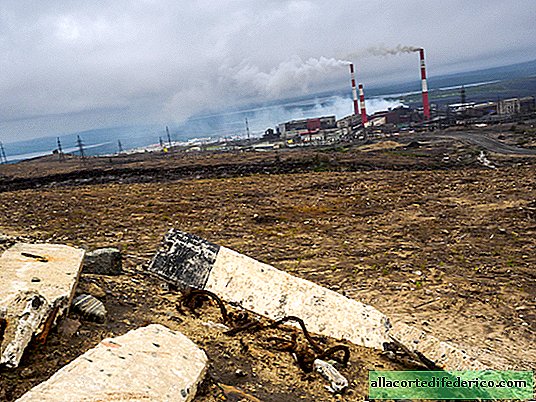
The foundation was laid for him ... Finnish metallurgists. Before World War II, this land belonged to Finland, and a mining and processing plant was built near the rich deposit of copper-nickel ores - the Petsamon Nikkeli concern.

Nearby quickly grew a working village. During the war, the plant suffered serious damage, but by 1946 the production of Feinstein - enriched ore - was restored.

For many years, the plant functioned, not particularly caring for the health of workers and nature. As a result, the land around the city became like a scorched desert - black land, the complete absence of living vegetation.

Nickel has repeatedly been included in the ratings of the most environmentally polluted settlements in Russia.

Caustic smoke, which, due to habituation, causes coughing attacks, envelops 143 residential buildings, where 11 thousand people live.

Most of the working-age population works at the plant - a city-forming enterprise. The owner of the plant is the Kola Mining and Metallurgical Company, a subsidiary of OJSC MMC Norilsk Nickel.

Despite the statements of Norilsk Nickel about "huge" investments in improving the environmental situation and land reclamation, from the point of view of a tourist it is not easy to notice them. Nickel looks like a branch of hell on earth.

Here is a dry excerpt from one of the ecologists' reports:
“During the year, there was an increase in atmospheric air pollution in the residential area of Zapolyarny and Nickel by emissions of enterprises of Kola MMC JSC mainly with sulfur dioxide,” the report says.
So, in the atmospheric air of Zapolyarny, monthly average sulfur dioxide concentrations exceeding the norm were recorded in the winter months. In December, the highest average monthly concentration was 6.0 MAC (maximum permissible concentrations). The largest single concentration in March was 7 maximum concentration limits.

According to observations for the period from 2010 to 2014, the average annual concentration of sulfur dioxide exceeds the sanitary norm.
In the village of Nickel, the situation is even worse: during the year there were three cases of high levels of sulfur dioxide in the atmosphere, in which the maximum single concentration was exceeded by 10 times.

Usually, elevated and high single concentrations are recorded under adverse weather conditions (strong winds or calm, air stagnation), which are mainly characteristic of the winter period (December-March). However, in 2014, all cases of exceeding the MPC by more than 10 times occurred in April, May and August.
According to the report, in 2014 at 20 water bodies 63 cases of extremely high pollution and 154 cases of high pollution were recorded mainly in the content of metals (nickel, molybdenum, copper), sulfates, flotation reagents, nitrogen compounds. These water bodies are located in the areas where mining, mining and metallurgical industries are located: Kola MMC JSC, Kovdorsky GOK JSC, Lovozero GOK LLC.
Speaking about water bodies in the zone of location of enterprises of Kola MMC JSC, it is worth noting that the Kolos-Yoki River, which receives the plant’s sewage, is the most polluted watercourse.
Compared to 2013, the copper and nickel content in the section is 14.7 km higher than the Nickel settlement. On average, the average for the year has not changed - 6 MAC for copper and 3 MAC for nickel. Also, compared with 2013, the average annual concentrations of nickel and copper on the estuary section of the river remained almost unchanged, which amounted to 42 MAC for nickel and 12 MAC for copper.
So. In fact, the plant emits sulfur dioxide into the atmosphere in quantities exceeding permissible standards. When combined with water, sulfuric acid is obtained. After the rain in Nickel, a yellow rim of sulfur forms around puddles, but this is not even the worst. The scary thing is that all water bodies and the earth around are polluted with almost the entire periodic table.
What do metallurgists respond to this? One of their representatives reacted immediately, as soon as I posted the photo from Nickel on Facebook.

“In fact, Norilsk Nickel is a large and respected plant. Not chimney smoke comes from the pipes, but purified steam. It’s just that. Treatment facilities work, they are a mandatory part of the production process, at all times and under any authority.”

The factory workers who read this laughed for a long time. According to a man who has worked at the plant for 13 years, local residents try not to go outside when smoke comes to the city. There is nothing useful for health in this - the average life expectancy is less than the national average, and the incidence of diseases is higher, especially for respiratory diseases.

It is ironic, but most of all they think about the environmental friendliness of production in Nickel ... not in Russia, but in neighboring Norway. And take action.
In 2001, Norway and Norilsk Nickel entered into an agreement under which Norway was to provide a company grant of NOK 270 million (EUR 32 million), as well as a loan of $ 30 million for 10 years from the Nordic Investment Bank. Part of the Norwegian grant was transferred to Norilsk Nickel: Norway paid NOK 20.6 million to replace the pelletizing-firing technology with the non-fired briquetting technology for ore concentrate in Zapolyarny. This allowed us to reduce sulfur dioxide emissions at the Zapolyarny production site.

But there is a nuance - the new technology involves the production of copper-nickel concentrate for the production of pellets, which are then smelted in the very nickel smelter, which increases sulfur emissions in Nickel about as much as they became less in Zapolyarny.
Moreover, in 2009 Norilsk Nickel informed the Norwegian authorities that it was withdrawing from an agreement with the Nordic Investment Bank to improve the environmental situation in the metallurgical industry in the village of Nickel on the Kola Peninsula.

In response, Norilsk Nickel was excluded from the investment portfolio of the Ethics Council of the Norwegian State Pension Fund. The wording was as follows: “Norilsk Nickel’s mining and smelting enterprises harm the environment, which runs counter to the fund’s objectives. The Ethics Council does not evaluate the company's actions to reduce emissions of sulfur dioxide and heavy metals now and in the future as adequate. How much The board is aware that the company's ambitious plans to reduce emissions were not implemented in 2003. For the ethics board, it is clear that Norilsk Nickel is not taking sufficient measures to prevent or reduce damage applied to the environment. "
Here are the latest statistics for 2016. According to Roshydromet official data, for the 31st day of July 2016, sulfur dioxide emissions in the Nickel village did not exceed the maximum permissible concentrations (MPC) only for four days - during the weekend, on which Metallurgist Day fell. In the remaining 27 days of the company's operation, sulfur dioxide emissions amounted to 6-8 MPC.
At the same time, Norilsk Nickel ... in 2016 was awarded the Prize from the Ministry of Natural Resources and Ecology "Environmental Development - Evolution Awards 2016". Evolution Awards is a professional award that is awarded for achievements in the field of sustainable development and the use of green technologies in the Russian Federation. According to company representatives, in the coming years "on the environment," they plan to spend over 300 billion rubles.

That's how simple it is: the plants poison the nature and the families of their workers who do not want or cannot leave somewhere else (and simply - everyone around). The oligarchs receive bonuses from the government, get richer, buy themselves new superyachts. Receiving a good salary and quarterly awards, “professional metallurgists” seem to themselves believe in fairy tales about “refined steam”.
In general, everything is fine ...

